Inside Intel's Secret Overclocking Lab: The Tools and Team Pushing CPUs to New Limits
We get an exclusive tour of the facility where Intel pushes chips to their absolute limit.
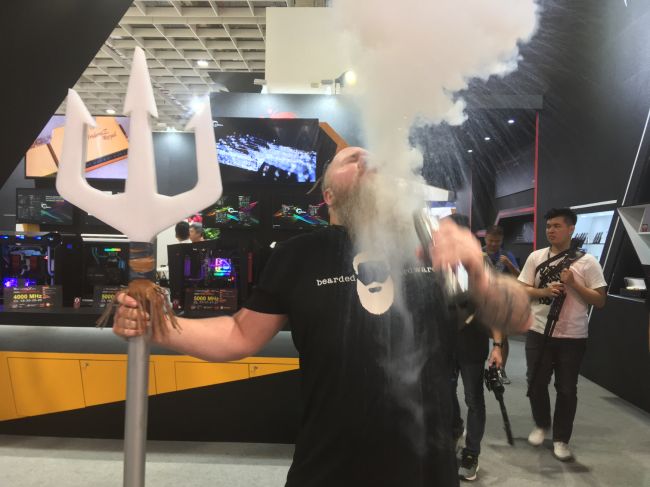
While we're accustomed to seeing overclockers bathed in liquid nitrogen (LN2) smoke with no protective gear whatsoever, and even guys like competitive overclocker Joe Stepongzi pouring LN2 in their mouths and spewing it everywhere for kicks, that runs counter to just about every hazardous materials warning known to man that's associated with liquid nitrogen.
In contrast, Intel places strict emphasis on safety throughout its entire company, and those same principles obviously apply to the work it does in the overclocking lab. Stepongzi is probably shaking his head somewhere in disappointment, but that means Intel's employees have to wear the full OSHA-approved line of gear to pour liquid nitrogen. In fact, it took the lab three months just to get the equipment approved internally, and all LN2-pouring employees have to attend dedicated training sessions to attain all of the requisite certifications.

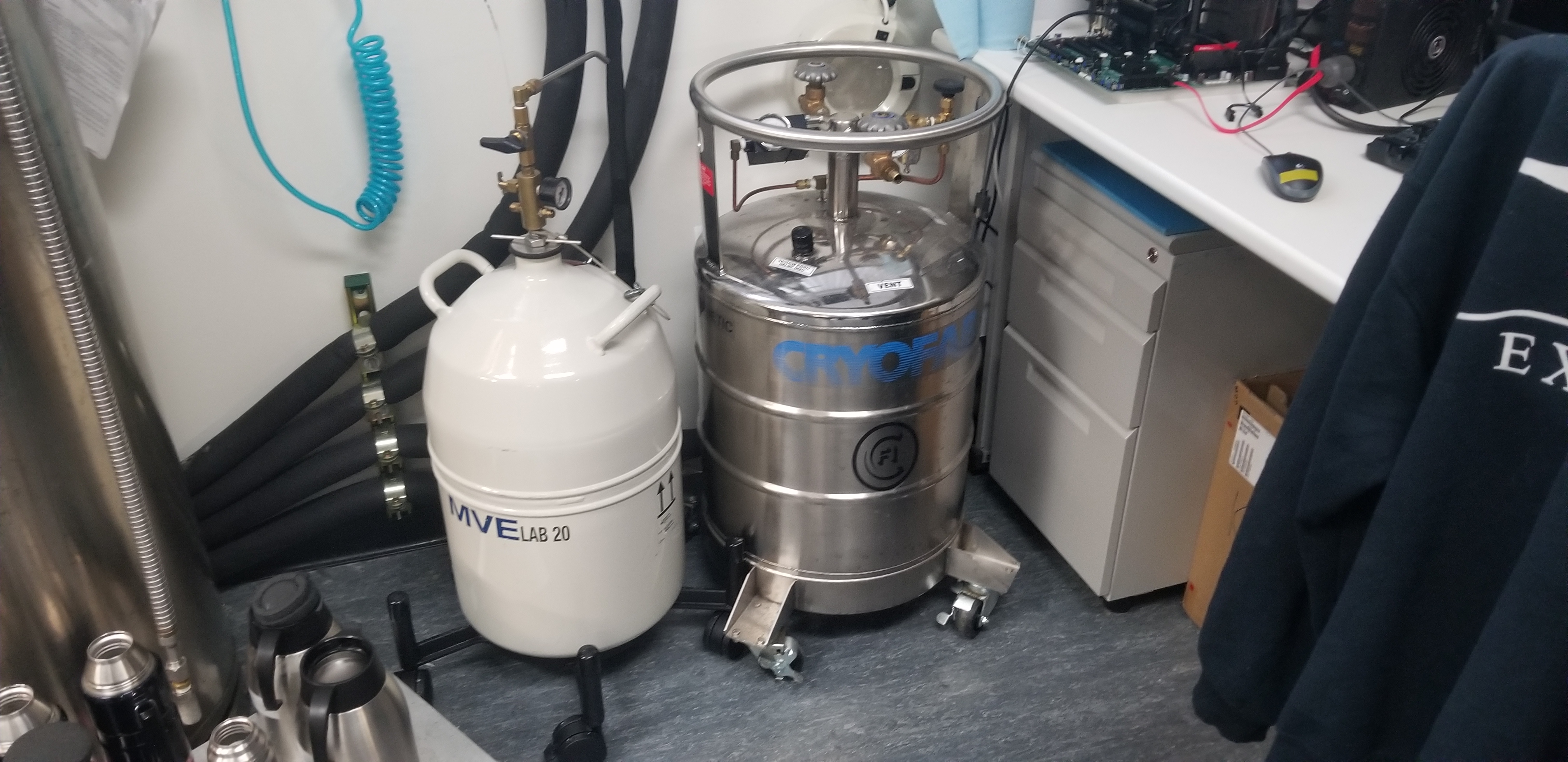
Intel's team spends a lot of time doing sub-zero overclocking (remember, they're binning and testing chips en masse), and here we can see its lineup of LN2 tanks. Interestingly, the small silver 50-liter LN2 tank to the right is Intel's first tank that it purchased specifically for overclocking (back in the Haswell/Ivy Bridge timeframe - 2010/2012). The tank no longer works and is in dire need of maintenance, but the team keeps it around for nostalgia's sake. Now the company rents the two big 180L silver tanks. They're replenished regularly.
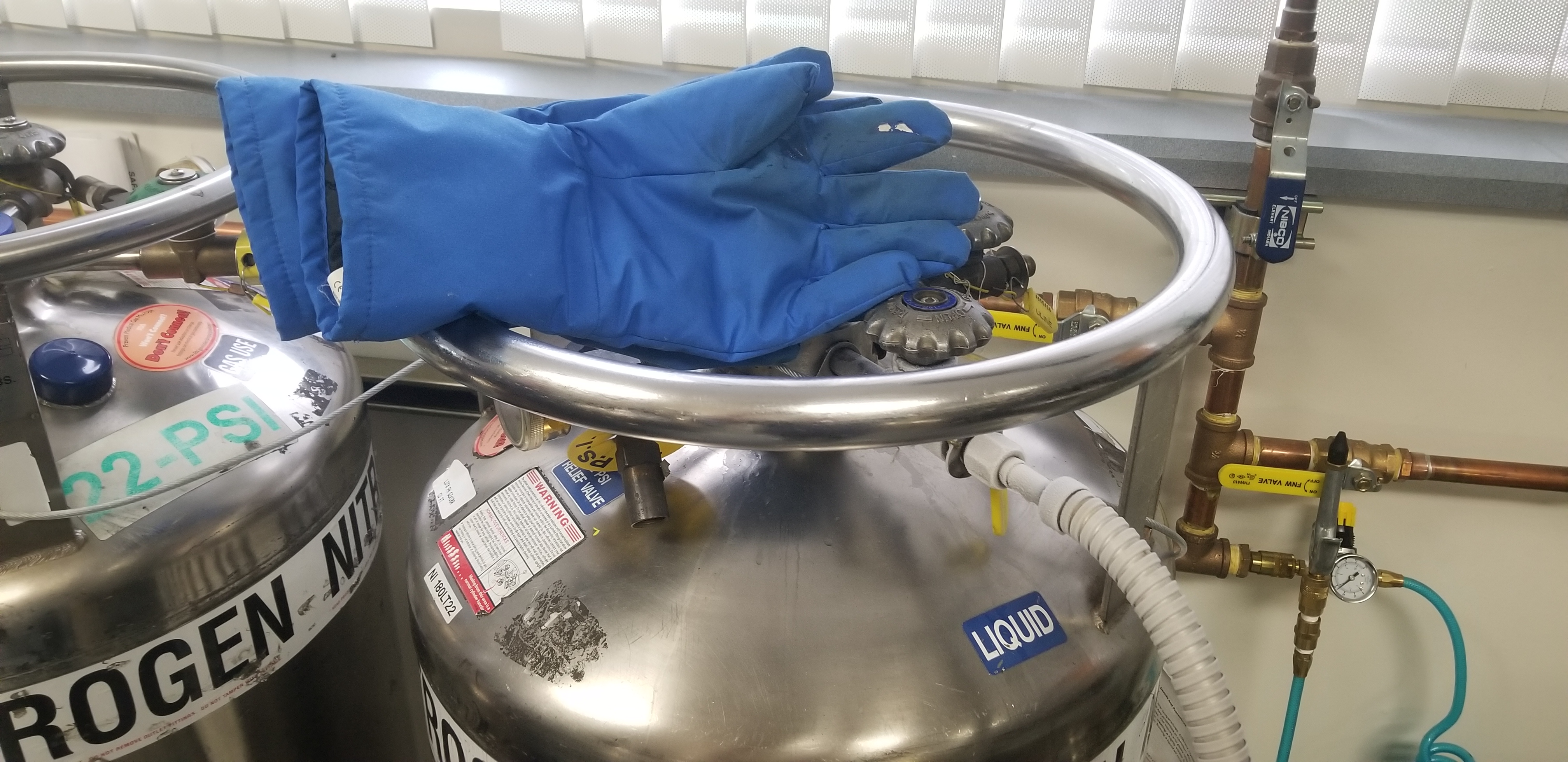
During heavy use, the knob on an LN2 tank will freeze up, potentially causing someone's hand to stick to it, so in keeping with the strict safety regulations, Intel has pairs of thermally-insulated gloves specifically used to turn the knob on the LN2 tanks. Given the rips, this glove has seen plenty of pours. Ragland tells us the company has to keep a fresh supply of LN2 and gloves on hand, not only for daily use but also for the company's overclockathons with motherboard vendors and top overclockers, which we'll cover shortly.

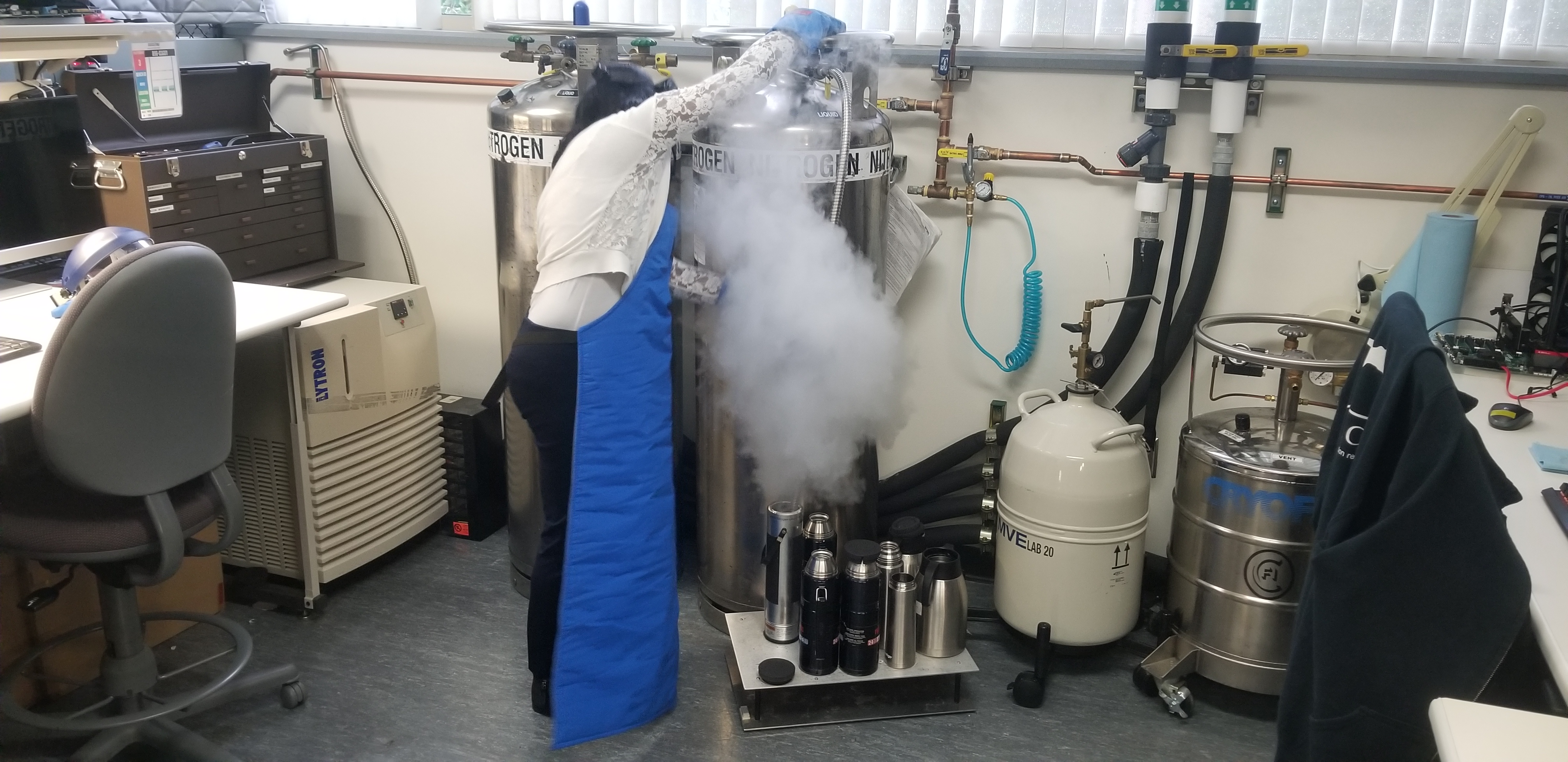
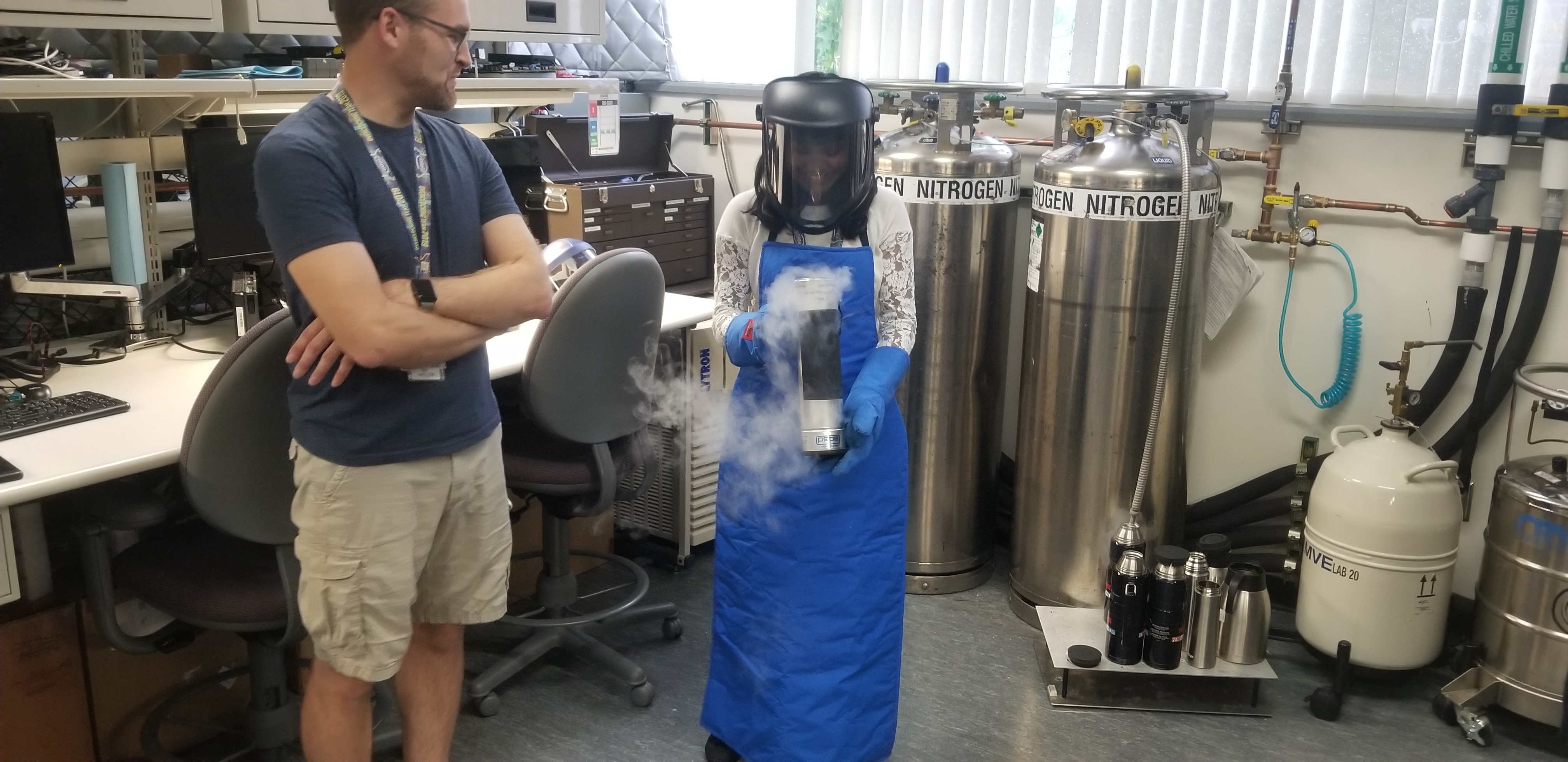
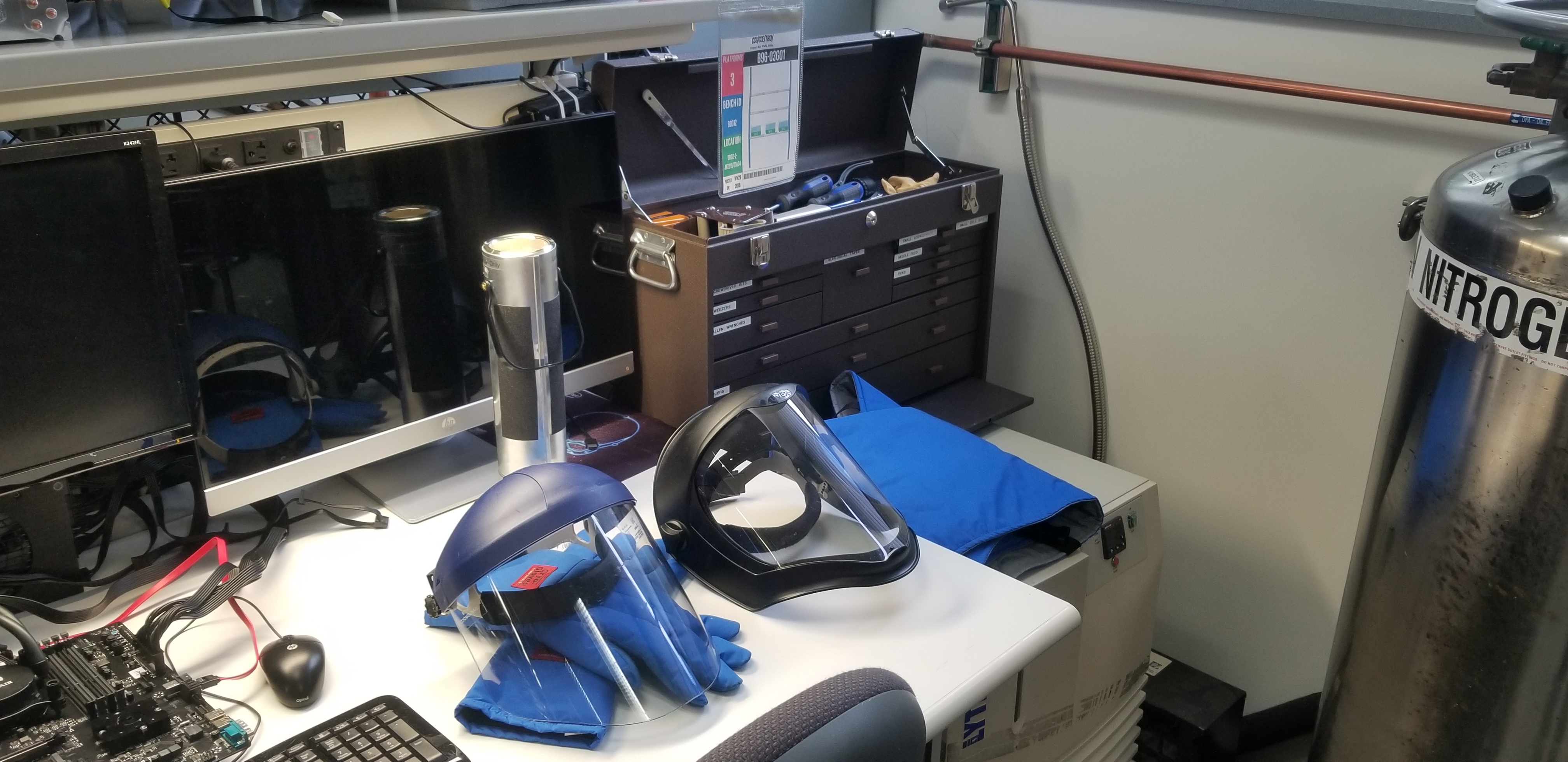
Here we can see Overclocking Performance Engineer Navya Pramod decked out in the Intel-approved gear for pouring and using liquid nitrogen, including an insulated smock, insulated gloves, and a full face shield. We're surprised there's no respirator involved, but we're told the lab is certified as having adequate ventilation for LN2 use.
As you can imagine, the cumbersome safety gear makes pouring LN2 less accurate, so we're not sure how often they follow these rules on a daily basis. We'll pretend it's 100%.
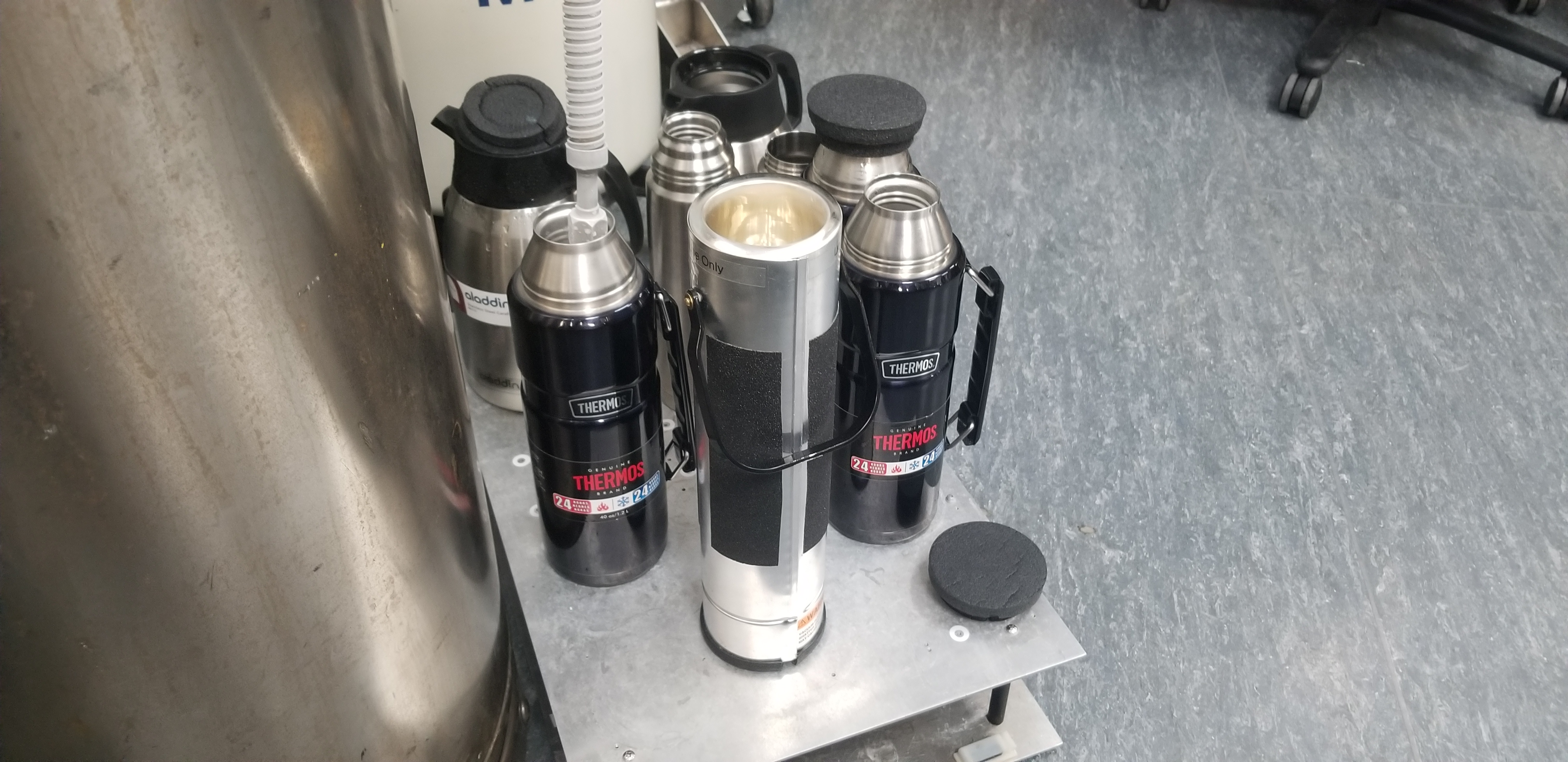
As expected, Intel's lab has plenty of LN2 flasks, and the model in the foreground is an Intel-certified vacuum flask. It has sandpaper on the outside of the flask to prevent slippage, various safety warnings, and a glass interior that shatters (loudly) even if the flask is tipped over on a table. The lab started out with six of these flasks, but now only has one remaining with an intact glass cover.
Get Tom's Hardware's best news and in-depth reviews, straight to your inbox.
As we can see, the lab also has several Thermos containers that it uses regularly, but found its preferred solution from an unlikely source.
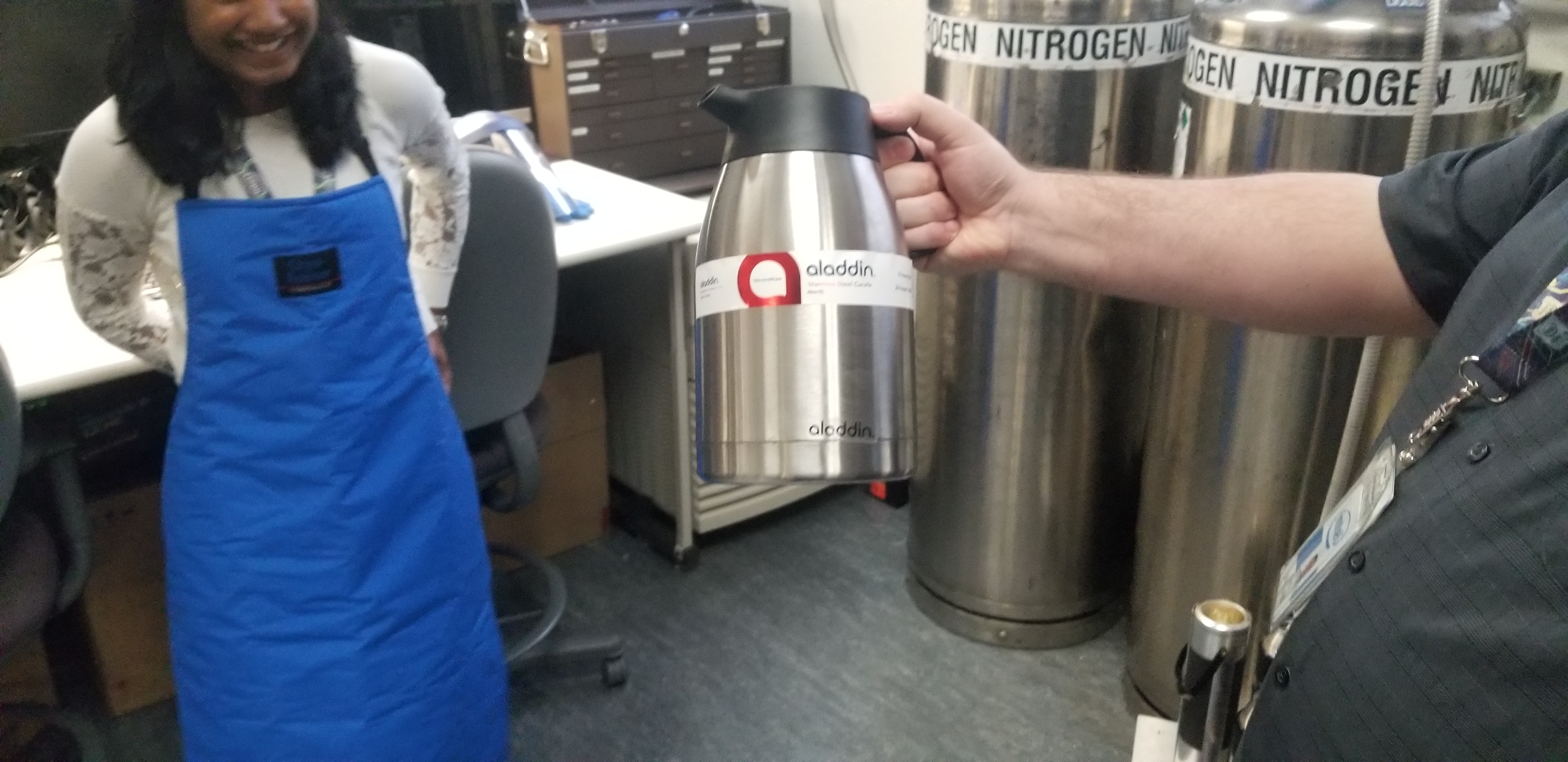
The world's leading overclocker, Splave, brought several of these Thermos-brand containers, which he purchased at a local Target, to an Intel overclocking bootcamp. The lab crew now prefers these pots because of the broad base, big capacity, and "nice pour handle." As Ragland says, "we use what works best."
- PAGE 1: The Overclocking Lab
- PAGE 2: The Beginnings and Mission of Intel's Overclocking Lab
- PAGE 3: Pouring LN2, the OSHA Way
- PAGE 4: TIM, Coolers, The Medusa, and Other Intel Lab Gear
- PAGE 5: Validation Boards and Overclocking Bootcamps
- PAGE 6: VRM Supercooling, PCH Swapping, and Internal Tools
- PAGE 7: 'Safe' Overclocking Voltages and Techniques
- PAGE 8: Is Overclocking Dead?
MORE: Best CPUs
MORE: Intel & AMD Processor Hierarchy
MORE: All CPUs Content
Current page: Pouring LN2, the OSHA Way
Prev Page The Beginnings and Mission of Intel's Overclocking Lab Next Page TIM, Coolers, The Medusa, and Other Intel Lab Gear
Paul Alcorn is the Editor-in-Chief for Tom's Hardware US. He also writes news and reviews on CPUs, storage, and enterprise hardware.
-
Paul Alcorn ReplyDark Lord of Tech said:Can you get the AMD tour? Would love to see that.
I'll jump on a plane the second it is offered :) -
bit_user @PaulAlcorn , thanks for the awesome piece!Reply
I'm still making my way through it, but wanted to draw special attention to this bit:
the engineers told us they feel perfectly fine running thier Coffee Lake chips at home at 1.4V with conventional cooling, which is higher than the 1.35V we typically recommend as the 'safe' ceiling in our reviews. For Skylake-X, the team says they run their personal machines anywhere from 1.4V to 1.425V if they can keep it cool enough, with the latter portion of the statement being strongly emphasized.
Thanks for that!
At home, the lab engineers consider a load temperature above 80C to be a red alert, meaning that's the no-fly zone, but temps that remain steady in the mid-70’s are considered safe. The team also strongly recommends using adaptive voltage targets for overclocking and leaving C-States enabled. Not to mention using AVX offsets to keep temperatures in check during AVX-heavy workloads. -
StewartHH Some one should comparison between different vendors die size like Intel 10nm vs AMD 7nm to see if there is actually performance gain. I would use per-core speed and not taking multiple cores into account.Reply -
bit_user @PaulAlcorn , uh oh. Now that I just finished heaping praise, I've got a gripe. In the penultimate paragraph:Reply
... assures that the learnings lessons and advances made in the overclocking realm ...
I was saddened to see the "learnings" virus infecting your otherwise admirable writing.
I think "learnings" is one of those pseudo-jargon words that MBAs and other B-school types like to throw around, out of jealousy for practitioners of real professions. Everyone from auto mechanics to accountants, lawyers, and doctors needs jargon to adequately and efficiently express concepts and constructs central to their work. However, common sense pervades business to such a degree that I think they're embarrassed by how easily understandable it'd be, if they didn't inject some fake jargon to obscure the obvious. The resulting assault on the English language is disheartening, at best.
Yes, if you've ever heard of her, you probably guessed I'm a fan of Lucy Kellaway, former journalist of the Financial Times and BBC. Worth a read:
The 8 Lucy Kellaway rules for claptrap and the fundamental theorem of corporate BS
Lucy Kellaway’s dictionary of business jargon and corporate nonsense -
Gurg AMD CTO Mark Papermaster: "you can't rely on that frequency bump from every new semiconductor node." AMD's future outlook of very limited frequency bumps, performance increases only from more cores and expensive software modifications to use more cores.Reply
VersusIntel Ragland: "People who think this the end of the world for overclocking because our competitors' 7nm has very little headroom, that's not true. Intel is all about rock-solid reliability; our parts aren't going to fail...you can count on your part running at spec, so there's so much inherent margin that we will always have overclocking headroom...I think users will be happy with the margin we can offer in the future."
Ouch! Intel's Ragland really "punked" AMD's negative outlook.
PS Great fascinating article -
jiang-v Anyone knows how to made contact with them? cause I fould a big bug on 10th corex chip about adaptive mode overclockingReply
overclocking/comments/ehxa7cView: https://www.reddit.com/r/overclocking/comments/ehxa7c/big_bug_in_10th_core_x_vid_mechanism_worst_avx512/ -
nofanneeded In the past OC gave a huge difference , today we can easy hit 4.4 all cores without OC and this is more than enough for me.Reply
for me OCing is dead. and I dont care about missing 5 fps.
I put the price difference in a better GPU ... -
CompuTronix Outstanding article! Thank you, Paul! I would love to have been there. I have a few dozen questions that the Team may or may not have been allowed answered.Reply
However, like bit_user, I found it of particular interest that the Team was forthcoming regarding specific voltage and temperature values they're comfortable with running on their personal home rigs, which max out at 1.425 and 80°C. With respect to electomigation and longevity, every day in the forums we see many overclockers express their concerns over these very issues.
On their website, Silicon Lottery shows Historical Binning Statistics that include the Core voltages used to validate their overclocked 14 and 22nm processors. For 22nm the maximum is 1.360. For 14nm the maximum is 1.456. While Intel's warranty is 3 years, Silicon Lottery's warranty is 1 year, which suggests at least one reason for the voltage difference between Intel's Team and Silicon Lottery.
Here's a forgotten link to a revealing Tom's Hardware video interview of July, 2016, with Intel's Principal Engineer (Client Computing Group), Paul Zagacki, where BGTnJkuqlbo']Intel Discusses i7-4790K Core Temperatures and Overclocking. The video coincides with the formation of Intel's Overclocking Lab, also in 2016. In the video, Intel points out that overclocking abilities begin to "roll off" above 80°C, which agrees with the value the Team revealed in your article.
While Core temperatures, overclocking and Vcore are often highly controversial and hotly debated topics in at least the overclocking forums, the term "electromigration" is closely related to a much less known term, which is "Vt (Voltage threshold) Shift". With respect to voltage and temperature, the two terms describe the causes and effects of processor and transistor "degradation" at the atomic level.
In the Intel Temperature Guide, in Section 8 - Overclocking and Voltage, I created a table for Maximum Recommended Vcore per microarchitecture from 2006 to the present. For 22 and 14nm, those values are 1.300 and 1.400 respectively. I also created a graph showing the Degradation Curves for 22 and 14nm processors. The table and graph helps overclockers get a better perspective of the degradation and longevity issue:
Sparing our members and visiting readers the deep dive, Vt Shift basically represents the potential for permanent loss of normal transistor performance. Excessively high Core voltage drives excessively high current, power consumption and Core temperatures, all of which contribute to gradual Vt Shift over time. Core voltages that impose high Vt Shift values are not recommended. The 14nm curve suggest 1.425'ish is the practical limit, which also agrees with the value the Team revealed in your article. The curve also suggests that Silicon Lottery might be pushing the edge of the envelope a bit.
The concern here is that when novice overclockers casually glance around the computer tech forums, where conflicting and misleading numbers get flung around like gorilla poo in a cage, many don't realize through the fog of all the confusion that one size Vcore does not fit all. Aside from high Core temperatures, Vcore that might be reasonable for one microarchitecture can degrade another. So 22nm Haswell users now wanting to overclock their aging processors to keep up with today's games need to heed the degradation curves, which applies as well to 14nm Skylake and Kaby Lake users.
CT :sol: